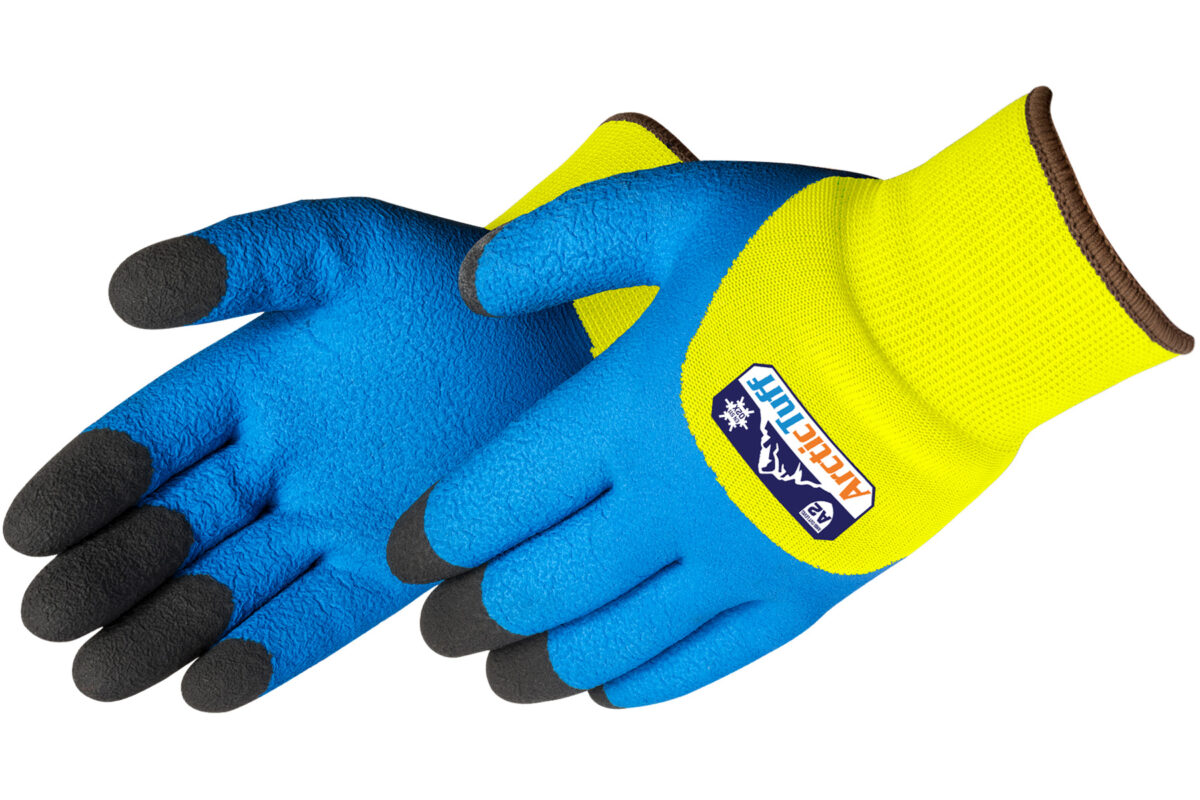Most industry worksites expose hands to a variety of hazards, including sharp edges, pinch points, dangerous machinery, electricity, and chemicals, just to name a few. It’s no wonder the Bureau of Labor Statistics (BLS) reports that hand injuries represent nearly 20% of all reported workplace incidents.
Those same statistics show that work-related injuries often result from human error, and the risk of more severe injuries, including amputation, can be high. That’s why it is essential to understand how to prevent them.
Let’s take a look at some basic hand safety tips and then get into a breakdown of the best types of PPE for hands, industry by industry. You will find out why choosing the right type of safety glove could prevent up to 70% of hand injuries.
Individual Hand Safety Best Practices
Anyone can be at risk of a hand injury if prevention strategies are not taken into account. But there are common sense hand safety practices employees can take to protect themselves.
- Use protective devices explicitly made to shield your hands from dangerous machines and tools such as barrier guards, two-hand tripping devices, electronic switches, etc.
- Choose a safety knife over a fixed open blade knife because the length of the exposed blade is limited, and the blade retracts with pressure or a switch.
- Avoid reaching into places where you can’t see what hazards your hand may encounter.
- Follow and secure dangerous equipment with a reliable lock and tag-out procedure.
- Wear the appropriate safety gloves but also be aware of their limitations.
Hand Safety Tips for Employers
The National Safety Council (NSC) provides a listed hierarchy of controls hand safety employers can follow. The list starts with the most effective measures to take and ends with the last line of defense, PPE. They include:
- Eliminate or substitute hazards when possible
- Isolate people from the hazard with engineering controls
- Change the way people work by following administrative controls
- Protect the worker with industry-specific PPE
Choosing Industry Specific Safety Gloves
Because every industry presents its own challenges and hazards, the Occupational Health and Safety Administration (OSHA) guidelines state, “It is essential that employees use gloves specifically designed for the hazards and tasks found in their workplace because gloves designed for one function may not protect against a different function, even though they may appear to be an appropriate protective device.”

And though PPE isn’t the first line of defense, OSHA says it still is considered a highly effective way of preventing hand injuries. Their research shows that 70.9% of hand injuries could have been prevented with proper safety gloves.
Knowing the risks and the preventive measures to put in place can keep you and your team’s hands safe. The industries at the highest risk of hand injuries include the following:
| Oil & Gas | Environmental Services | Utilities/Power/Energy |
| Food Processing | Construction | Agricultural |
| Janitorial/Sanitation | MRO | Automotive |
Below, we have listed each industry and show the hazards, common hand injuries, and the safety glove that is most often requested.
Oil & Gas
In a summary of occupational incidents, the International Association of Drilling Contractors (IADC) says that 20.26% of total industry lost-time incidents by body part are related to fingers and 9.21% to hands. For total recordable industry incidents, the figure jumps to 31.12% for fingers and 10.29% for hands.
Common Hand Injuries
Heavy equipment like drill pipes causes many hand injuries in the oil and gas industry. The injuries often result from:
- Being struck by or caught between objects
- Contact with chemicals or heat
- Contracting infections from cuts and abrasions
Popular Choice – F4518TPR Impact Resistant Gloves

The Daybreaker® Cotton Cord Impact Gloves were designed to absorb impact on the fingers, knuckles, and back of the hand. The fluorescent orange cotton and polyester corduroy material provide high visibility with a durable but comfortable grip. It’s an all-purpose impact-resistant glove appropriate for many oil and gas applications.
Food Processing
Food processing workers typically use cutting, trimming, and packaging tools. Strenuous and repetitive work puts food workers at risk for minor to severe hand injuries.
The BLS reports injuries to the upper extremities (hand, arm, wrist, and shoulder) accounted for 33% of days-away-from-work cases across private industries. Hand injuries make up 14 percent of those cases.
Common Hand Injuries
Along with cut risks, food processing workers face harsh chemicals and the bacteria, grease, and oils inherent in food products. Proper glove usage is essential to their safety and is considered critical PPE for substantially minimizing the risks.
Popular Choice – F4781LG Cut Resistant Gloves

For food processing workers, wearing cut-resistant gloves is considered necessary PPE and can considerably minimize the risks. And because they often work in cold storage areas, keeping their hands warm and protected from freezing temperatures is essential. The Arctic Tuff™ Thermal Lined Gloves are often suggested for these workers because it provides a thermal, 15-gauge, with ANSI A2 rating for cut protection.
Janitorial/Sanitation
Janitorial and sanitation workers face hazards, unlike in any other industry. In an article for Cleaning & Maintenance Management magazine, 34% of surveyed custodians reported having at least one work-related injury within a year of the survey, with 16% being admitted to a hospital.
Common Hand Injuries
The physical nature, including the many lifting tasks of the work, lead to injuries that impact arms, shoulders, hands, and fingers. Sprains, strains, and overexertion injuries frequently occur when workers get on and off the trucks and deal with heavy loads. Exposure to possible dangerous materials is another hazard.
Popular Choice – 2010W Industrial Disposable Gloves

The DuraSkin® Blue Nitrile Disposable Gloves offer protection from the type of harmful chemicals and substances janitors and sanitation workers often use. Workers may also be exposed to blood-borne pathogens or other substances that require them to change their gloves often. Disposable gloves are a great option, and Nitrile has a good chemical-resistant level and excellent puncture resistance.
Environmental Services
Work-related injuries in environmental services usually involve exposure to harmful contaminants or musculoskeletal disorders, according to an article on the Facility Cleaning & Maintenance website. Because of the tasks workers face every day, hands are especially vulnerable.
Common Hand Injuries
Potential hazards to hands and arms are skin absorption of harmful substances, chemical or thermal burns, electrical dangers, bruises, abrasions, cuts, punctures, or fractures. Protective equipment includes gloves, finger guards, and arm coverings.
Popular Choice – 2133 Chemical Resistant Gloves

Commonly used gloves for environmental services work are often made of Polyvinyl chloride (PVC). It’s a material that offers great protection against acids, peroxides, and various oils, as well as good resistance to abrasions. This Semi-Rough Black PVC Safety Glove checks all the boxes and also provides a knit wrist, 12-inch gauntlet, and is interlock lined.
Construction
Workers in construction, maintenance, and natural resources fields have a higher risk of hand-related injuries than in other industries. Hand injuries accounted for 29.6% of injuries in these fields, while all other occupations only had a 12.7% average, according to government agencies in the U.S. and Canada.
Common Hand Injuries
Construction sites are known for having many injuries and work accidents, such as slips, falls, and machine accidents. But, another common occurrence at construction sites is hand and finger injuries. The Health & Safety Institute referred to construction sites as epicenters for these injuries.
Popular Choice – F4927 Cut Resistant Gloves

Most construction workers choose a multi-purpose foam-coated glove with an A4 cut rating which is what the Z-Grip™ Gray Proprietary Foam Coated Gloves offers. These touchscreen-compatible gloves provide just the right level of protection and can still be comfortable to wear for a wide variety of jobs.
MRO
Even in this age of automation, some jobs require manual efforts and skills and are best done only by experienced hands. That’s when MRO workers are called in and why it’s a workforce that relies so heavily on its hands.
Unfortunately, roughly 20% of all work-related injuries affect the hands of manufacturing workers, according to a study conducted by the U.S. Bureau of Labor Statistics.
Common Hand Injuries
Cuts, open wounds, and lacerations from machine malfunctions are common types of hand injuries caused by worksite accidents in manufacturing. Other hand injuries can also occur using smaller tools like nail guns, saws, or shovels.
Popular Choice – F4600 Coated Seamless Gloves

Designed for resistance against oily applications and abrasion risks, the G-Grip™ Microfoam Nitrile Coated Seamless Gloves provide the reliable, flexible type of protection MRO workers need. Made with materials that allow agility and comfort, they’re dependably made and used for various applications.
They offer excellent sensitivity and fit and have colored cuffs for easy size identification. They are durable enough to withstand multiple launderings.
Utilities/Power/Energy
For workers in utilities, power, or energy industries, hands can be exposed to major hand injury risks such as contact with large equipment, hand tools, high temperatures, harmful substances, or environments. The BLS reports hands and fingers account for 21% of all electrician’s injury claims.
Common Hand Injuries
Some injuries resulting from working in this industry include electrical and chemical burns, frostbite, contusions, and milder injuries like muscle pain and stiffness. Other typical hand injuries include friction burns, pinches, and even carpal tunnel syndrome caused by the repetitive motion tasks that are often required.
Popular Choice – 0818 Mechanic Gloves

Safety gloves that provide dexterity and abrasion resistance are a good bet for workers in these industries. The goatskin and spandex fabric combination used in the Defender™ Goatskin Mechanic Gloves offers needed movement and provides added protection with padded palm, reinforced sides, and easy hook/loop closures. Plus, the super soft, comfortable fit makes it easy to wear all day.
Agricultural
Injuries to the hands are extremely common for agricultural workers. The American Academy of Orthopedic Surgeons says hand injuries represent 40% to 70% of total admissions for injuries that occur on farms.
Common Hand Injuries
Along with the dangers of injuries from heavy machinery and hours of working in the sun, agricultural workers risk health problems caused by exposure to chemicals like pesticides. Because absorption through the skin is the most common route of exposure, contact can occur when touching a piece of equipment, protective clothing, or a surface with chemical residue.
Popular Choice – 2970SL Chemical Resistant Gloves

Nitrile is a perfect solution for agricultural workers who do not work directly with pesticides. It is sometimes also known as synthetic rubber. Additional abrasion resistance offers a non-slip grip and makes it a good choice for general-purpose use.
The Green Nitrile Unsupported Gloves have a 15 mil thickness with a 13” length and extended straight cuff. Alternatively, the 2960C model is 13 in length, 15 mils with no lining. They provide solvent resistance and anti-slip protection and meet FDA conformance for repeated use with food.
Automotive
The automotive industry can be brutal on the hands. Workers often are required to use hot, sharp metal and many hazardous chemicals. A recent study reported in Health Day News said that 28% of the auto mechanics interviewed experienced more than 20 cuts on their hands just in the last year. The study also showed that 46% had a regular occurrence of hand eczema.
Common Hand Injuries
Typical injuries for auto workers include burns, lacerations, sprains and strains, and contusions. But they can also face carpal tunnel syndrome and occupational skin problems caused by contact with oil, grease, and solvents.
Popular Choice – A4938 Cut Resistant Gloves

Working in the auto industry means using lots of tools and heavy equipment, which can lead to serious hand injury risks. Workers need gloves that can perform and protect against many potential hazards. Tough enough to resist engine oils and grease but flexible enough to be used on mechanical gear, X-Grip™ Gray Polyurethane Coated Gloves are an excellent choice.
Remove the Excuses
Regardless of the industry and its dangers, hand injuries and the impact on employees can be minimized. By assessing the environment, identifying the hazards, and getting all the workers on board to follow safe processes and wear industry-specific safety gloves, hands, and even lives, can be saved.
Luckily, today’s safety gloves offer such a wide variety of features that they remove the excuses many workers make for not wearing them. With touchscreen capabilities, comfort designs, weather protection, and great fits, it is easy to make gloves an everyday part of your day.
Liberty Safety offers a large selection of gloves categorized with many good, better, and best options so you can choose the most appropriate glove for your line of work. We can help you choose from some of the most requested gloves for your industry.


